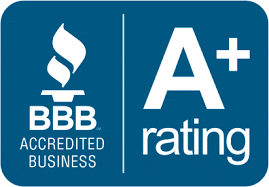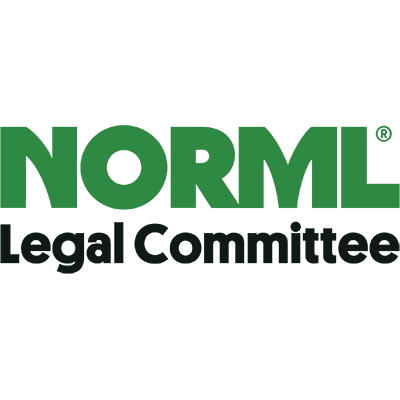In Texas, controlled substances are categorized by their penalty group. Penalty groups are drug classifications based on the drug’s potential for addiction and medical use. These penalty groups were introduced in the Texas Controlled Substances Act.
The penalties for drug offenses heavily depend on their penalty group. Penalty group 1 drug offenses tend to have harsher consequences than a penalty group 4 crime. Marijuana is an exception to this rule. While cannabis is a penalty group 1 drug, it doesn’t carry the same penalties of other penalty group 1 substances.
If you or someone you know has been charged with a drug crime, it’s important that you seek trusted legal representation.
Lawyer for Penalty Groups in Travis County, Texas
Have you been arrested for possessing, using or selling a controlled substance? It’ important that you contact an experienced criminal defense attorney. Your attorney can assess what penalty group your case is associated with. They can also collect evidence, file motions and create a strong defense plan.
Don’t look any further than Kevin Bennett. He has years of experience representing people with drug crime allegations in Texas. Kevin Bennett also handles each case personally. Your questions, suggestions and concerns will always be heard and never dismissed.
Contact Kevin Bennett now at (512) 476-4626 for a free consultation. The Law Office of Kevin Bennett accepts clients throughout the greater Austin area including Rollingwood, Lago Vista, Pflugerville and Lakeway.
Overview of Penalty Groups in Texas
- Penalty Groups in Texas
- Penalties for Drug Possession
- Legal Abbreviations for Drug Offenses
- Additional Resources
Penalty Groups in Travis County, Texas
Texas uses penalty groups to determine the penalties for a drug crime. Each penalty group is categorized by their medicinal usage and potential for abuse. Texas Penal Code § 481.102 lists the penalty groups for controlled substances set forth by the Texas Controlled Substances Act.
Penalty Group 1 – The drugs found under penalty group 1 have no medicinal purpose and a very high risk of abuse. Penalty group 1 drugs tend to have the highest penalties.
- Examples include: Methadol, cocaine, oxycodone, methamphetamines, ketamine, heroin, Morphine, Fentanyl, Desmoprhine or “Krokodil”, and types of codeine.
Penalty Group 1-A – This penalty group is reserved for the controlled substance called lysergic acid diethylamide (LSD). LSD is known to have little to no medical usage and a high risk of dependency.
Penalty Group 2 and 2-A – Controlled substances for penalty group 2 have a high potential for chemical dependency and some medical use. Penalty group 2-A is reserved solely for synthetic cannabinoids, otherwise known as “spice.”
- Examples include: MDMA or ecstasy, Mescaline, amphetamine, psilocin (mushrooms), tetrahydrocannabinols other than marijuana.
Penalty Group 3 – Drugs found under penalty group 3 have a mid-level potential of abuse and can be used for medical purposes in some situations. Most substances found under penalty group 3 are generally classified as depressants.
- Examples include: Methylphenidate (Ritalin), Alprazolam (Xanax), Pentobarbital, peyote, Lorazepam (Ativan), Diazepam (Valium), and anabolic steroids.
Penalty Group 4 – All drugs under penalty group 4 contain small doses of narcotics with other drugs such as codeine in Tylenol. Nearly all controlled substances found under penalty group 4 have a medical purpose and little risk of dependency.
Penalties for Possessing a Controlled Substance in Texas
The chart below lists the penalties for possessing a controlled substance in Texas.
| Penalty Group | Sentence | Weight (Grams) | Prison Term | Maximum Fine |
| Group 1 | State Jail Felony | Less than 1 gram | Up to 2 years in jail | Up to $10,000 |
| Third-Degree Felony | 1 gram or more, but less than 4 grams | Up to 10 years in prison | Up to $10,000 | |
| Second-Degree Felony | 4 grams or more, but less than 200 grams | Up to 20 years in prison | Up to $10,000 | |
| First-Degree Felony | 200 grams or more, but less than 400 grams | Up to 99 years or life in prison | Up to $10,000 | |
| First-Degree Felony | 400 grams or more | Up to 99 years or life in prison with minimum of 10 years | Up to $100,000 |
| Penalty Group | Sentence | Weight (Grams) | Prison Term | Maximum Fine |
| Group 1-A | State Jail Felony | Less than 20 units | Up to 2 years in jail | Up to $10,000 |
| Third-Degree Felony | 20 or more, but less than 80 units | Up to 10 years in prison | Up to $10,000 | |
| Second-Degree Felony | 80 or more, but less than 4,000 units | Up to 20 years in prison | Up to $10,000 | |
| First-Degree Felony | 4,000 or more but less than 8,000 units | Up to 99 years or life in prison | Up to $10,000 | |
| First-Degree Felony | 8,000 or more units | Up to 99 years or life in prison with minimum of 15 years | Up to $250,000 |
| Penalty Group | Sentence | Weight (Grams) | Prison Term | Maximum Fine |
| Group 2 | State Jail Felony | Less than 1 gram | Up to 2 years in jail | Up to $10,000 |
| Third-Degree Felony | 1 gram or more, but less than 4 grams | Up to 10 years in prison | Up to $10,000 | |
| Second-Degree Felony | 4 grams or more, but less than 400 grams | Up to 20 years in prison | Up to $10,000 | |
| First-Degree Felony | 400 or more | Up to 99 years or life in prison | Up to $50,000 |
| Penalty Group | Sentence | Weight (Grams) | Prison/Jail Term | Maximum Fine |
| Group 2-A | Class B Misdemeanor | 2 ounces or less | Up to 180 days in jail | Up to $2,000 |
| Class A Misdemeanor | 4 ounces or less, but more than two ounces | Up to 1 year in jail | Up to $4,000 | |
| State Jail Felony | 5 pounds or less, but more than 4 ounces | Up to 2 years in jail | Up to $50,000 | |
| Third-Degree Felony | 50 pounds or less, but more than 5 pounds | Up to 10 years in prison | Up to $10,000 | |
| Second-Degree Felony | 2,000 pounds or less, but more than 50 pounds | Up to 20 years in prison | Up to $10,000 | |
| First-Degree Felony | More than 2,000 pounds | Up to 99 years or life in prison | Up to $50,000 |
| Penalty Group | Sentence | Weight (Grams) | Prison Term | Maximum Fine |
| Group 3 | Class A Misdemeanor | Less than 28 grams | Up to 1 year in jail | Up to $4,000 |
| Third-Degree Felony | 28 grams or more, but less than 200 grams | Up to 10 years in prison | Up to $10,000 | |
| Second-Degree Felony | 200 grams or more, but less than 400 grams | Up to 20 years in prison | Up to $10,000 | |
| First-Degree Felony | 400 grams or more | Up to 99 years or life in prison | Up to $50,000 |
| Penalty Group | Sentence | Weight (Grams) | Prison Term | Maximum Fine |
| Group 4 | Class B Misdemeanor | Less than 28 grams | Up to 180 days in jail | Up to $2,000 |
| Third-Degree Felony | 28 grams or more, but less than 200 grams | Up to 10 years in prison | Up to $10,000 | |
| Second-Degree Felony | 200 grams or more, but less than 400 grams | Up to 20 years in prison | Up to $10,000 | |
| First-Degree Felony | 400 grams or more | Up to 99 years or life in prison | Up to $50,000 |
Legal Abbreviations for Drug Offenses in Texas
The criminal process can be incredibly confusing. Most people are forced to quickly learn legal procedures, so they are prepared in court. If you have a loved one in jail for a drug offense, you may see legal abbreviations. These abbreviations are used to quickly explain the offender’s charges. Understanding these abbreviations is your first step to bailing your loved one out of jail.
Listed below are the legal abbreviations used for possession of a controlled substance.
Penalty Group 1:
POSS CS PG 1 <1G
POSS CS PG 1 >=1G<4G
POSS CS PG 1 >=4G<200G
POSS CS PG 1 >=200G<400G
POSS CS PG 1 >=400G
Penalty Group 1-A:
POSS CS PG 1-A <20IU
POSS CS PG 1-A >=20IU<80IU
POSS CS PG 1-A >=80IU<4,000IU
POSS CS PG 1-A >=4,000IU<8,000IU
POSS CS PG 1-A >=8,000IU
Penalty Group 2:
POSS CS PG 2 <1G
POSS CS PG 2 >=1G<4G
POSS CS PG 2 >=4G<400G
POSS CS PG 2 >=400G
Penalty Group 2A:
POSS CS PG 2-A <2OZ
POSS CS PG 2-A >=2OZ<4OZ
POSS CS PG 2-A >=4OZ<5LB
POSS CS PG 2-A >=5LB<50LB
POSS CS PG 2-A >=2,000LB
Penalty Group 3:
POSS CS PG 3 <28G
POSS CS PG 3 >=28G<200G
POSS CS PG 3 >=200G<400G
POSS CS PG 3 >=400G
Penalty Group 4:
POSS CS PG 4 <1G
POSS CS PG 4 >=1G<4G
POSS CS PG 4 >=4G<200G
POSS CS PG 4 >=200G<400G
POSS CS PG >=400G
Listed below are the legal abbreviations used for manufacture and delivery of a controlled substance.
Penalty Group 1:
MAN DEL CS PG 1 <1G
MAN DEL CS PG 1 >=1G<4G
MAN DEL CS PG 1 >=4G<200G
MAN DEL CS PG 1 >=200G<400G
MAN DEL CS PG 1 >=400G
Penalty Group 1-A:
MAN DEL CS PG 1-A <20IU
MAN DEL CS PG 1-A >=20IU<80iU
MAN DEL CS PG 1-A >=80IU<4,000IU
MAN DEL CS PG 1-A >=4,000G
Penalty Group 2 or 2-A:
MAN DEL CS PG 2/2-A <1G
MAN DEL CS PG 2/2-A >=1G<4G
MAN DEL CS PG 2/2-A >=4G<400G
MAN DEL CS PG 2/2-A >=400G
Penalty Group 3 or 4:
MAN DEL CS PG 3/4 <28G
MAN DEL CS PG 3/4 >=28G<200G
MAN DEL CS PG 3/4 >=200G<400G
MAN DEL CS PG 3/4 >=400G
If the drug found on you isn’t in a penalty group, you may see an abbreviation similar to this: POSS CS NOT IN PG.
Additional Resources
Texas Drug Laws – Visit the official website of Texas Health and Safety Code to learn more about penalty groups. Access the statute to find more information about drug possession, drug trafficking and other related offenses in Texas.
Drug Scheduling – Federal laws classify drugs into schedules rather than penalty groups. Visit the official website of the United States Drug Enforcement Administration to learn more about drug schedules. Access the site to learn the drugs listed under each penalty group, facts about controlled substances and the Controlled Substance Act (CSA).
Lawyer for Penalty Groups in Austin, Texas
If you or someone you know has been charged with a drug offense, it’s imperative that you contact an experienced criminal defense attorney. Find that attorney today with Kevin Bennett. He has years of knowledge defending people accused of drug offenses in the Travis County area.
Start your defense plan today. Contact Kevin Bennett at (512) 476-4626 to schedule a free consultation. The Law Office of Kevin Bennett accepts clients throughout the greater Austin area including Rollingwood, Pflugerville, Bee Cave, Lago Vista and Manor.








